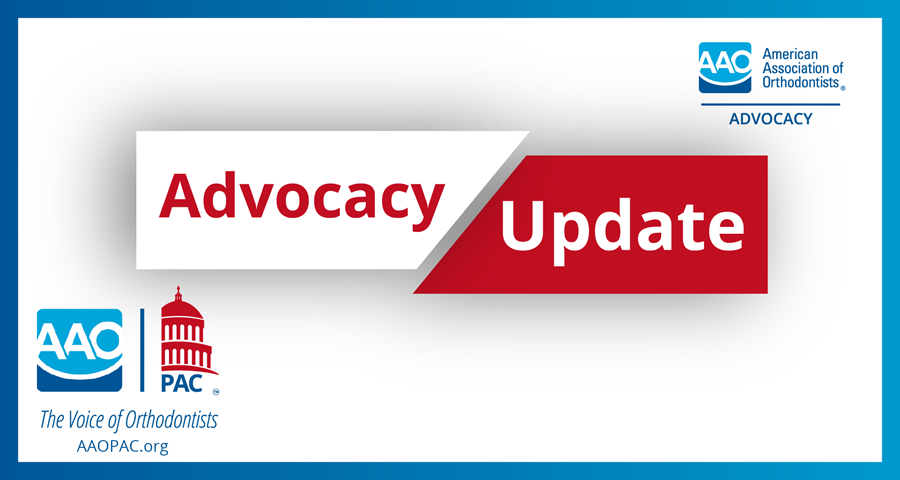The Government Accountability Office (GAO) recently submitted a performance audit to U.S. Congress highlighting the Food and Drug Administration (FDA) and Federal Trade Commission (FTC) oversight responsibility for direct-to-consumer advertising of medical devices, including prescription orthodontic devices.
The AAO worked with 21 key Members of Congress – including many from the Energy & Commerce Committee – last year in pursuing this performance audit by the GAO. The audit is an important first step to better understand the ways the FDA and FTC do or do not coordinate on oversight of federal regulations relating to direct-to-consumer advertising practices.
The GAO is a legislative branch government agency that provides auditing, evaluation, and investigative services for the United States Congress. The bipartisan letter was led by Congresswoman Angie Craig of Minnesota and Dr. John Joyce of Pennsylvania. They are both members of the U.S. House Energy and Commerce Committee, which has jurisdiction over these issues. Also joining this letter was the Chairwoman and Ranking Member of the Energy and Commerce Consumer Protection Subcommittee, Rep. Jan Schakowsky and Rep. Gus Bilirakis. Additionally, the Chairwoman and Ranking Member of the Energy and Commerce Oversight and Investigations Subcommittee, Rep. Diana DeGette and Rep. Morgan Griffith joined the letter. In addition to the two letter leads and four subcommittee leaders, other signers included Reps. Kelly Armstrong, Brian Babin, Tony Cárdenas, Tom Cole, Brian Fitzpatrick, Debbie Lesko, Mariannette Miller-Meeks, Kim Schrier, and Lori Trahan.
The GAO agreed to take up this request and chose the AAO as one of 11 groups to interview alongside the agencies in developing its report. The full GAO performance audit submitted to Congress and highlights can be found here.
The analysis from the GAO helps to clarify a roadmap of how the AAO may be able to engage with the FDA and FTC. The FDA confided to the GAO that they prioritize those direct-to-consumer issues that are violations in advertising around unapproved uses of prescription medical devices, rather than whether an advertisement is false or misleading.
The AAO can make use of this information by finding ways to demonstrate that certain companies are advertising what amounts to unapproved uses of medical devices (example: unsupervised use of clear aligners).
Additionally, the FDA said one of the primary ways they determine areas to investigate is through complaints submitted directly to the FDA by individuals or competitors. The AAO has met with officials at the FDA and weighed in with them, and we will explore this path as well.
Both the FDA and FTC acknowledged to the GAO that they do not have sufficient resources to exercise oversight over all direct-to-consumer prescription medical devices and note that they rely heavily on the reports of patient groups. Mail-order orthodontic companies have required aggrieved patients to sign non-disclosure agreements (NDAs), which can limit the number of complaints relating to orthodontic appliances.
The report is incredibly helpful in guiding the AAO’s advocacy, according to AAO Director of Advocacy Nathan Mick, who said, “We expected the GAO performance audit to be a neutral report to help inform Congress on issues important to our AAO members. Now that the GAO report is completed, it provides a positive opportunity for follow-up with key Members of Congress to continue discussing our patient health and safety concerns relating to mail-order orthodontic treatment models.”
The AAO Advocacy team has been busy in recent weeks meeting with key officials on Capitol Hill, along with Cozen O’Connor Public Strategies, to discuss next steps for Congressional action following the release of this GAO performance audit.
We will continue to keep AAO members updated on relevant information, and please watch for grassroots action alerts e-mailed to you to help with outreach to your lawmakers in Congress, building on this valuable GAO performance audit supported by the AAO.
Government Accountability Office Sends AAO-Supported Performance Audit to Congress
October 11, 2023


